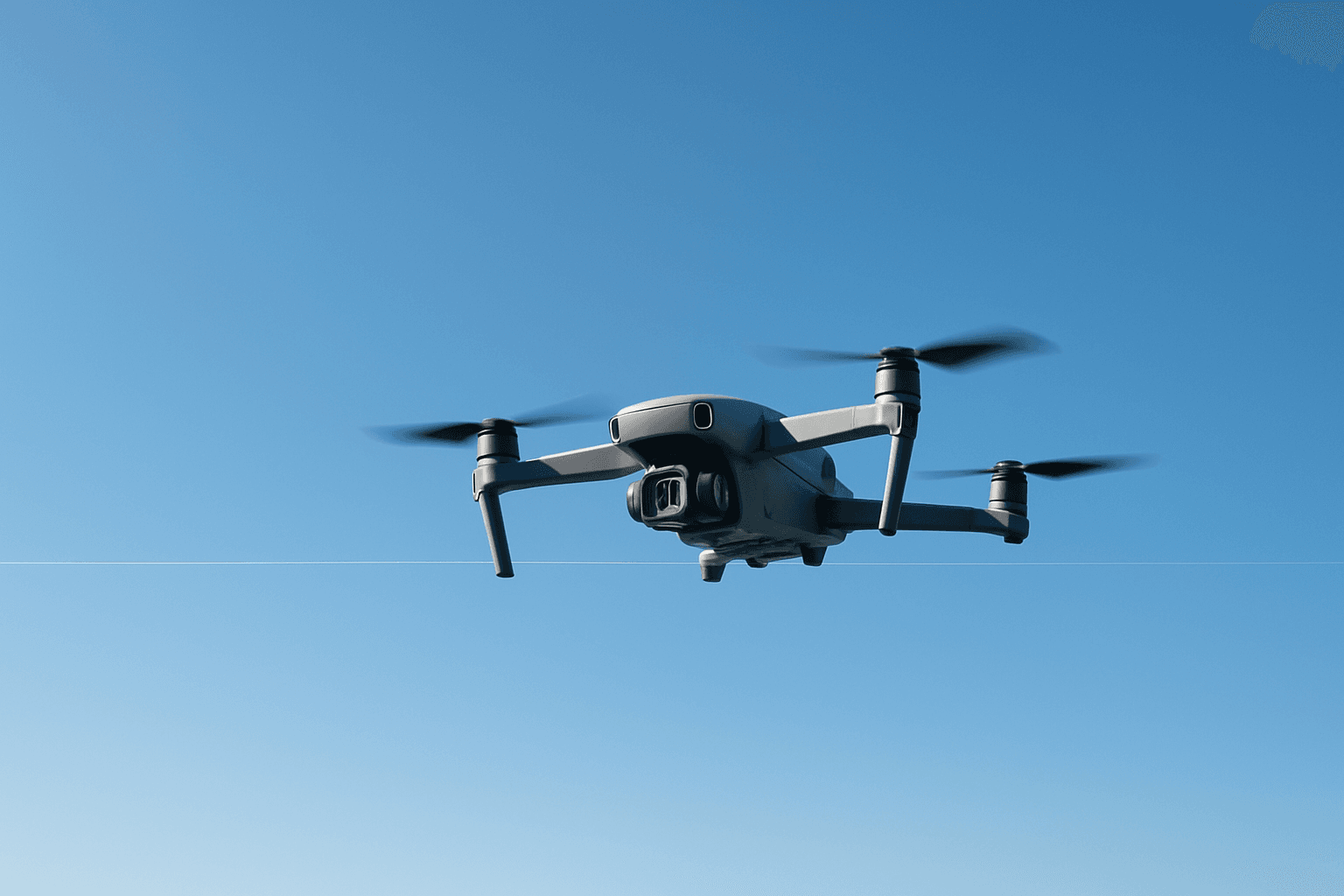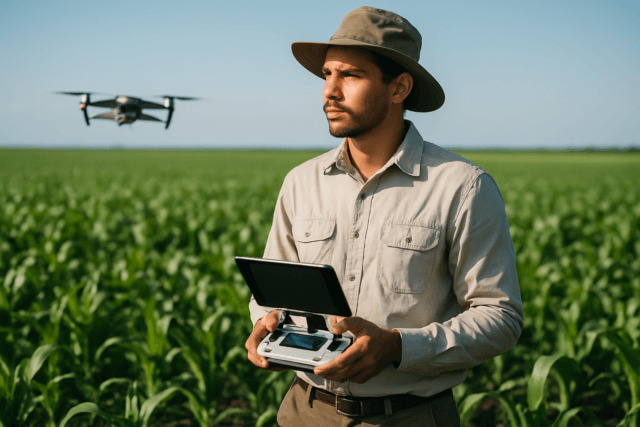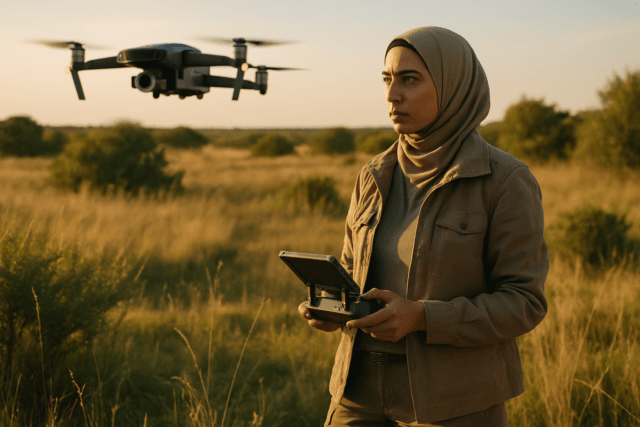Drones have become increasingly popular for both recreational and commercial purposes, offering exciting opportunities for aerial photography, surveying, and exploration. However, it’s crucial to understand the regulations governing drone flight, especially concerning altitude limits, to ensure safe and legal operation. This guide provides a comprehensive overview of drone altitude limits in the UK, helping you navigate the skies responsibly.
Understanding UK Drone Altitude Regulations
The Civil Aviation Authority (CAA) regulates drone flights in the UK, setting a maximum altitude of 120 meters (400 feet) above the surface for both recreational and commercial drones. This limit is in place to maintain safe airspace and prevent conflicts with manned aircraft, which typically operate at higher altitudes.
Why 400 Feet?
The CAA has determined that 400 feet is the maximum altitude where drones and commercial airliners can safely coexist. This limit allows drones to operate at their optimal performance for capturing aerial footage without disrupting the flight paths of other aircraft.
Key Regulations:
- Maximum Altitude: 120 meters (400 feet) above the earth’s surface.
- Distance from People: Minimum horizontal distance of 50 meters between your drone and people. If flying higher than 50m, maintain the same distance horizontally (e.g., 80m away if flying at a height of 80m).
- Restricted Areas: Drones are prohibited from flying near airports, military bases, and other sensitive locations.
- Visual Line of Sight (VLOS): Operators must maintain a clear line of sight with the drone at all times.
- Weather Conditions: Fly further away from people in poor weather conditions, such as high winds, to allow more reaction time.
How Altitude is Measured
The drone’s altitude should never be more than 120m (400ft) from the closest point of the earth’s surface. When flying near hills, mountains, or cliffs, adjust the flight path to ensure the drone is never more than 120m (400ft) from the closest point of the ground.
Consequences of Violating Altitude Limits
Flying a drone higher than the permitted altitude can result in legal problems. Penalties for exceeding altitude limits can include fines up to £2,500. If a drone causes a safety risk, more serious legal consequences may arise.
Exceptions to the Rule: Flying Higher with Permission
While the 120-meter altitude limit applies to most drone users in the UK, exceptions exist for commercial drone pilots who obtain special permission from the CAA. Commercial drone pilots needing to fly higher for specific purposes, such as surveying or mapping large areas, can apply for an Operational Authorisation.
Obtaining Permission
To obtain permission to fly higher than 120 meters, commercial drone operators must demonstrate the necessary skills and safety protocols to conduct the flight safely. They must also ensure they have public liability insurance to cover potential accidents or damage.
Restrictions
Even with special permission, commercial drone pilots are still subject to strict regulations regarding where they can fly and how high they can go. They may be prohibited from flying near airports or in restricted airspace and must always maintain a safe distance from people and property.
Recreational vs. Commercial Drone Height Limits
Recreational drone pilots are generally limited to the 400 ft (120 meters) limit, and are unable to exceed this—even with permission. Professional or commercial drones, though, are permitted to exceed 400ft under certain conditions after receiving special permission from the Civil Aviation Authority (CAA). With permission, drones can legally be permitted to exceed 33,000ft in height. One stipulation is that all drones above 400ft must be within 400ft of a building or structure.
International Altitude Regulations
Drone altitude limits vary from country to country. While the UK sets a 400-foot limit, some countries have lower limits, such as Germany (230 feet) and Spain (384 feet). France, meanwhile, allows for a maximum height of 492 feet. Many countries, such as Turkey, Panama, South Africa, The Netherlands, India, China, Canada, Brazil, America, Australia, and Argentina, use 400 feet as the height limit. Indonesia has the highest height a drone can fly to, at 500 feet.
Examples of International Regulations
- Germany: 230 feet (70 meters)
- Spain: 384 feet (117 meters)
- France: 492 feet (150 meters)
- United States: 400 feet (122 meters) in uncontrolled airspace
Factors Affecting Drone Altitude
While legal restrictions limit how high a drone can fly, several technical and environmental factors affect how high a drone actually flies:
Technical Capabilities
Different drones have varying altitude capabilities based on their design, including motor power, aerodynamics, weight, and GPS technology. For example, some drones can technically reach altitudes of up to 5000 to 6000 meters (16,404 to 19,685 feet) above sea level.
Reduced Air Density
Higher altitudes have thinner air, impacting the drone’s ability to generate lift, which can decrease maneuverability and altitude control.
Environmental Factors
Temperature, humidity, air pressure, and wind conditions can affect a drone’s performance.
Battery Life and Connection Strength
Individual limitations, such as battery life and controller connection strength, influence each drone’s actual operational altitude.
Safe Flying Practices
- Pre-Flight Checks: Use a pre-flight checklist to ensure the drone is in proper condition to fly.
- Monitor Height: Set altitude limits in drone settings and monitor the height display during flight.
- Consider Ground Elevation: Consider ground elevation and maintain visual reference points.
- Maintain Visual Line of Sight: Always keep the drone in direct sight.
- Avoid Congested Areas: Avoid flying over congested areas and maintain a safe distance from people, vehicles, and buildings.
- Understand Drone Capabilities: Understand the user manual for your drone to understand its capabilities and limitations.
Essential Resources for Drone Pilots
- CAA Website: For the most up-to-date regulations and guidance.
- Drone Assist App: To check for no-fly zones and other restricted areas before flying.
- Drone Retailers: Offer courses to help drone pilots understand the rules and regulations.
UK Drone Laws: Open Category
Pilots flying by the rules of the Open Category will tend to be hobbyist/recreational flyers, as well as certain commercial pilots, and must adhere to the following:
- The aircraft’s maximum take-off mass must be less than 25kg.
- Keep the drone within Visual Line of Sight (VLOS).
- Do not fly higher than 400 ft (120 metres) from the earth’s surface.
Conclusion
Understanding and adhering to drone altitude limits is essential for safe and legal drone operation in the UK. By following the regulations set forth by the CAA and practicing safe flying habits, drone pilots can enjoy the benefits of this technology while minimizing risks to themselves and others.





